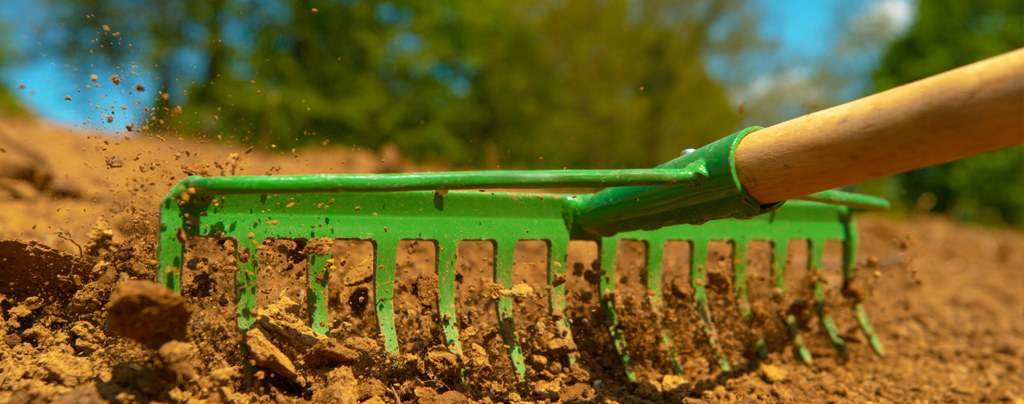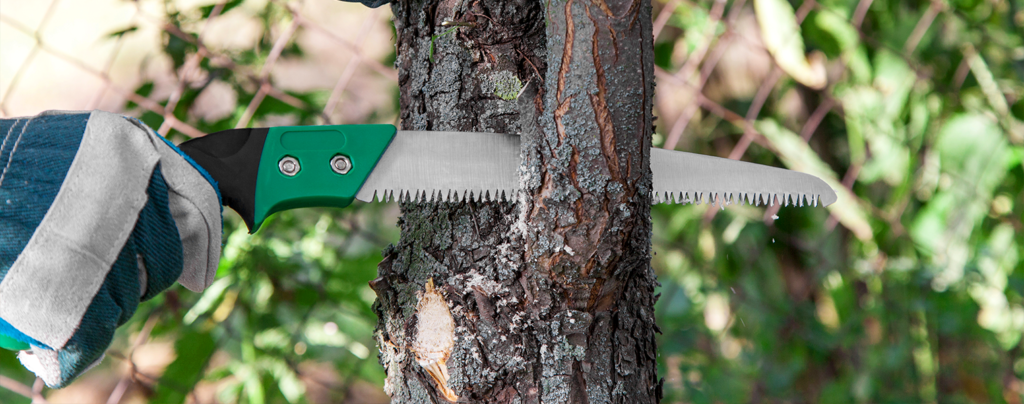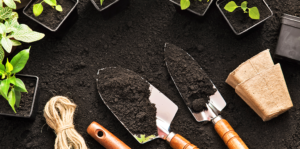The garden tool aisle can be a pretty daunting place for a new gardener — without a proper guide, your mind might start spinning when presented with rows upon rows of different shovels and shears in all sizes and shapes. By figuring out the basic function of each tool, plus the key differences between those similar-looking tools, you can tackle garden projects with much greater confidence. And for those of you long-time gardeners who have been “winging it” and improvising tools as you go along, if you want to polish up your skills and improve your results, this guide will certainly help. Take a look at our Fort Lauderdale Garden Tool Guide to help you navigate the garden tool aisle like a pro!
Our Guide To 11 Basic Garden Tools
While it’s not impossible to maintain a garden without being able to name all your basic tools, it certainly gets tricky when it comes time to buy a new one, and the lady at the store has no idea where in the store you’ll find another “thingamabob.” Here’s our list of 11 basic garden tools you’ll probably recognize, plus some extras that you may have never known you needed!
Trowel: A garden trowel is an essential tool for any gardener. From raised bed gardening to container gardening and all sorts of other outdoor garden projects, a trowel always comes in handy. Its pointed handle is perfect for piercing through compacted soil to turn it up, dig out holes for transplanting, transport bulbs and seedlings into their hole, and refill holes with fresh soil. Since they get used so often and get repeatedly picked up and put back down, lots of gardeners prefer trowels with vibrant, colorful handles so they aren’t constantly scrambling to find them in the garden.
Pruning Shears: A high quality, sharp pair of pruning shears will make trimming plants and smaller hedges so much easier, and the results will be much more attractive. Thick, woody stems can be tricky to cut through with a set of dull blades, and a sloppy job that damages branches can hinder future growth and stress out your plant. Shears are a pretty useful tool if you’re an avid vegetable gardener, as many of our favorite late-summer veggies grow on thick vines, and aren’t the easiest to harvest without some good shears. Investing in a nice pair is important, but maintaining them is equally critical. Always sanitize your shears after cutting plants — especially if you’re dealing with plants that show signs of disease, such as a nasty fungus.

Rake: Now, we certainly don’t expect any of you to be unfamiliar with this particular tool. Rakes are pretty basic lawn necessities. However, if you think rakes are strictly for collecting leaves, think again! Rakes have several uses that improve the health of our lawns, and can also provide some use in the garden. Pulling a rake through your lawn grass regularly can help dethatch it — or in other words, detangle it to promote air circulation, which results in faster, healthier growth. Rakes can also be used to create even divots in garden soil so you can plant seeds in perfect rows, simply by dragging it across the surface. They’re also great tools for spreading stuff around, like mulch or compost. If you’ve been using hand tools to mix compost into the soil, but struggle with kneeling or bending at the hip, using a rake helps maintain a more comfortable distance.
Digging Shovel: This tool is kind of like a much bigger version of a trowel that needs to be used with two hands instead of one. As you’d expect, it’s used for planting bigger plants, digging bigger holes, and mixing up large amounts of soil and compost before spreading. It also helps if you need to scoop out soil from your wheelbarrow, but don’t want to dump it all out at once. The pointed blade is made for plunging deep into the soil and breaking through packed-down dirt.
Garden Spade: Many gardeners are a bit unsure of the different functions between the garden spade and digging shovel — after all, they look pretty similar. What makes the spade unique is its flat head and squared-off blade. It’s pretty handy if you’re working in a tighter, confined space, and it fits into corners or raised beds perfectly. Since it doesn’t penetrate as deeply as a pointed blade, it has less of an impact on surrounding plants and is less likely to disturb the root systems. Some folks find that spades are a great tool for cutting out weeds with stubborn roots that you can’t quite yank out by hand.
Loppers: For bigger pruning projects like shrubs and trees with branches up to 2 inches thick, you’ll need something a bit more heavy-duty than regular shears. A set of loppers should do the trick! These sharp-bladed tools have long, extended handles that need to be held in each hand. Similarly to shears, it’s always wise to invest in good blades, keep them sharpened, and sanitize them to prevent the spread of bacteria and plant disease. Plus, dull blades will give you much more of an arm workout than you bargained for.

Pruning Saw: If you need to cut branches bigger than 2 inches wide, it’s time to pull out the big guns. Pruning saws are serrated hand saws that slice through wood by being pulled through the branch repeatedly. Always use a good set of gloves and wear thick, protective clothing to prevent injury when using a saw.
Garden Gloves: It’s strange to think of gloves as a tool, but with so many tools that we use by hand, protective garden gloves are a no-brainer. Anyone who has suffered a palm-full of sore calluses after an afternoon of raking or trowelling, or spend the better part of an hour scrubbing dirt from their fingernails, will vouch for the necessity of gardening gloves. Many have added rubber gripping so you can easily handle your tools, and some are waterproof. While some gloves are all function and feature state-of-the-art, ergonomic designs, others have a fun combo of fashion and function. If your usual gardening tasks aren’t too labor-intensive, you can have some fun and opt for cute, colorful printed gloves.
Are you in need of some new tools to kick off the new decade? Visit Living Color Garden Center, and we’ll help you start your 2020 garden off on the right foot!

